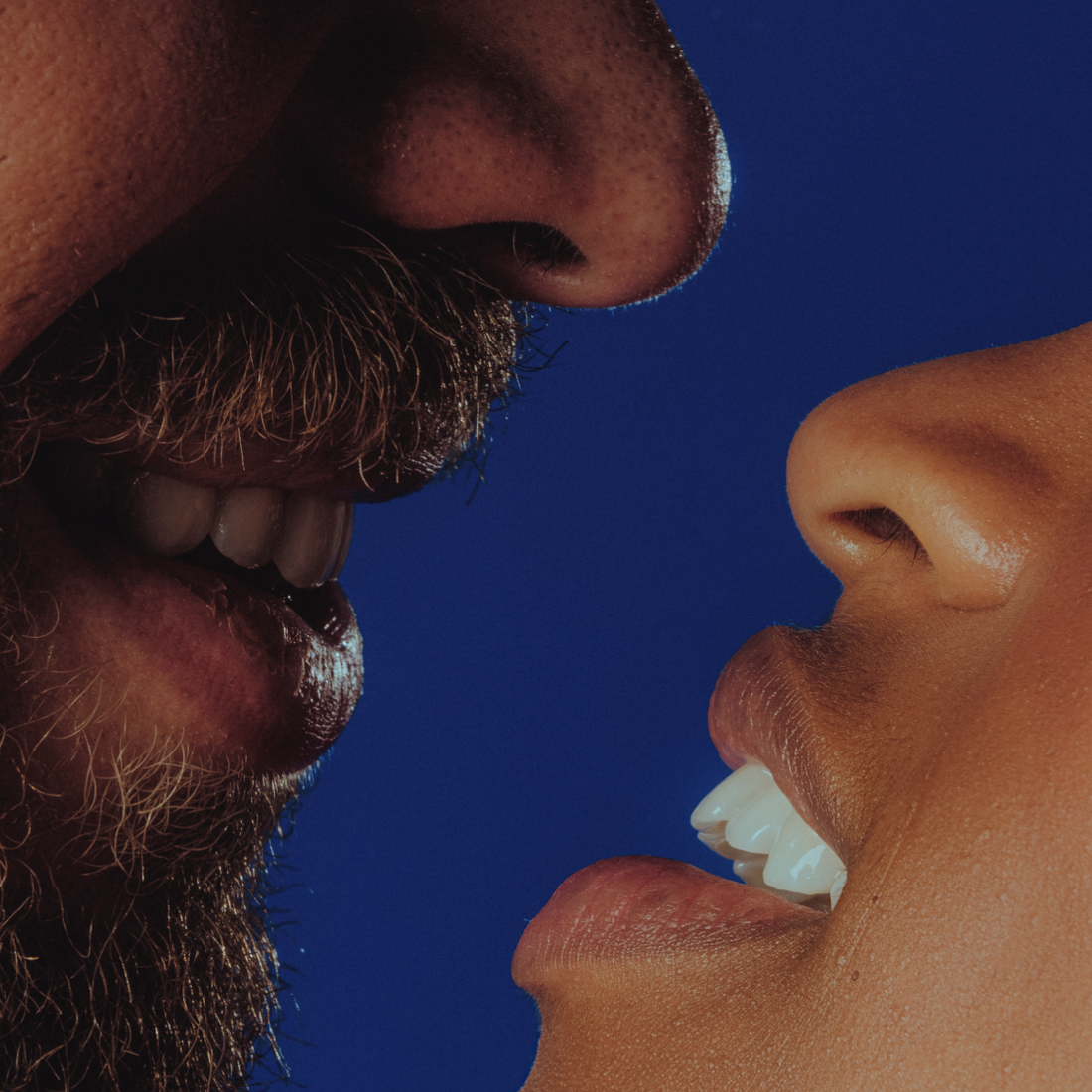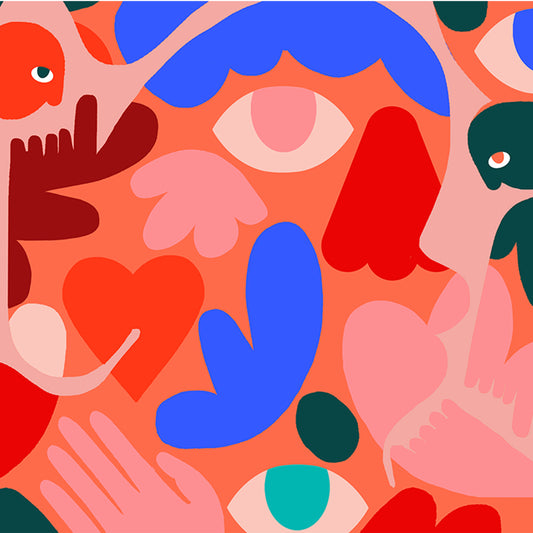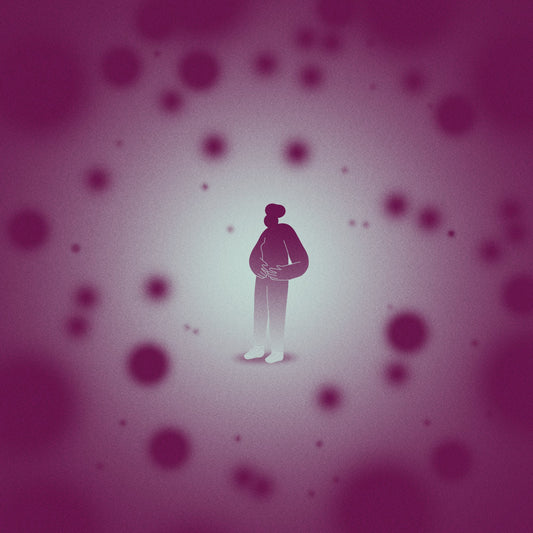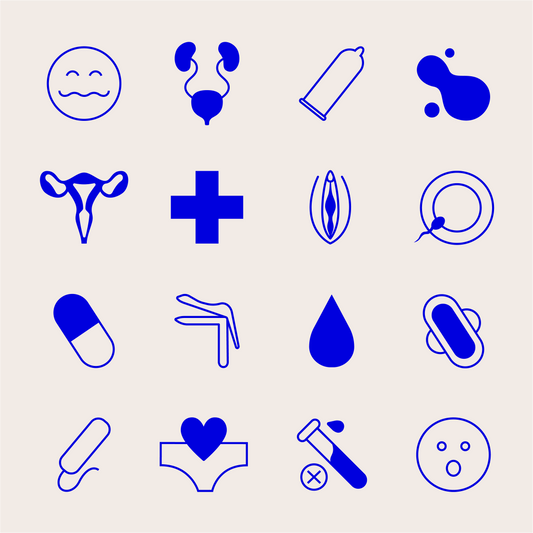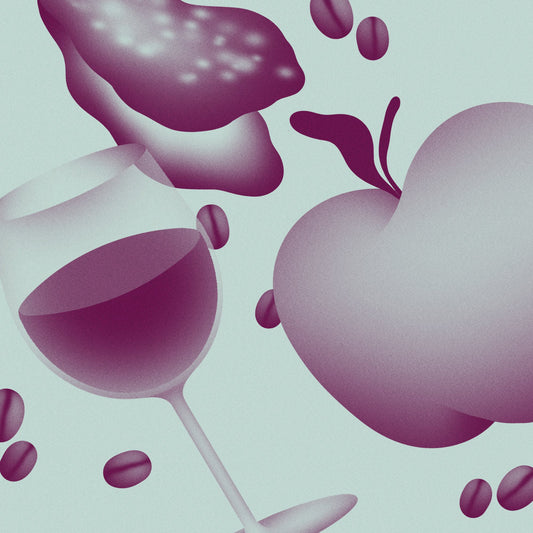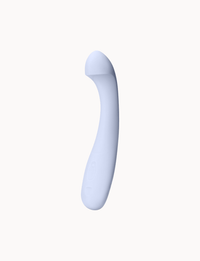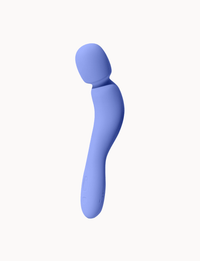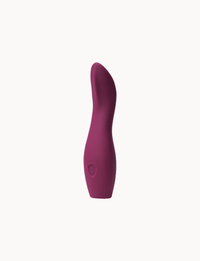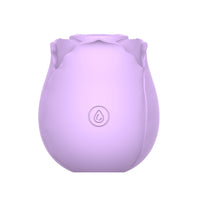Alexandra Fine, Credentialed Sexologist, M. Psych | Written by Dame
What Is Sexual Arousal? | It Isn’t the Same Thing as Sexual Desire | Triggers? | The Process | Hormones and Sexual Arousal? | What If You Don’t Experience Sexual Arousal? | Treating Sexual Problems | Sexual Desire and Arousal Dysfunctions | Can You Boost Arousal Levels Naturally?
“I know it when I see it.”
That was Justice Potter Stewart’s famous statement about hard-core pornography, in a 1964 Supreme Court decision.
Many people would say that a modified version of that statement could also summarize the complicated subject of human sexual arousal: “You know it when you feel it.”
The goal here isn’t to minimize the very important topic of arousal. The point is that – quite simply – people are aroused by what they’re aroused by, It’s largely out of their control.
Those who are turned on by blondes can’t “force themselves” to be excited by brunettes. Those who are aroused by muscular builds or big intellects can’t make themselves get turned on by people who don’t have those qualities. Lesbians or gay penis-havers can’t just decide to be attracted to someone of a different gender. People with fetishes can’t just wish them away.
If someone is sexually aroused, they’re aroused.
But exactly why does that happen? Is there any way to control sexual arousal? And what about people who seem to have very low levels of arousal – or never get aroused at all?
Those are important questions, and they explain why the topic of sexual arousal is much more complicated than simply “knowing it when you feel it.”
Let’s answer those questions. In fact, let’s answer many more while we’re at it.
What Is Sexual Arousal?
The dictionary definition of sexual arousal is a clinical one:
“A state of physiological and psychological excitation caused by sexual contact or other erotic stimulation.”
While that appears to be accurate, it doesn’t seem to do justice to the mix of exhilarating, frustrating, scary and wonderful feelings you experience when your sexual interest is triggered. Breaking down the definition, though, takes us closer to merging the feelings of sexual arousal with the words that describe it.
“Psychological excitation” underscores the fact that arousal begins in the brain. A stimulus – whether it’s an arousing thought, image or touch – activates areas of the brain, primarily the hypothalamus and the amygdala, causing it to send out signals to the rest of the body.
“Physiological excitation” encompasses the body’s predictable responses to that brain activation. They begin with increased blood flow, which causes vaginal lubrication and engorged sexual tissues in vulva-owners and erections in penis owners. The familiar increases in heart rate, blood pressure and respiration are also physiological responses to sexual arousal.
Of course, the full picture is more complicated than that. Hormone levels, health or emotional factors, and lifestyle issues are among the other factors that can enhance or blunt sexual arousal. But the body is designed to become sexually aroused, and respond accordingly, when the right triggers are pushed.
Let’s clear up one misconception before we move on.
Sexual Arousal Isn’t the Same Thing as Sexual Desire
The word “libido” gets tossed around a lot, particularly in those ads for sexual enhancement products that are impossible to avoid.
But libido, also referred to as sex drive or sexual desire, is very different than sexual arousal.
Libido is a way of describing your appetite for sex; some people want a lot of sexual activity, some are satisfied with much less. That’s different than sexual arousal, which is what does (or for some people, doesn’t) happen when you’re exposed to sexual stimuli. It’s quite possible, for example, that people might want to engage in sexual activities, but find they’re unable to get aroused when the time comes.
Why does that matter?
It’s primarily because sexual dysfunctions are quite common, and lack of libido and lack of sexual arousal are often treated in different ways. Medications (like Viagra) may be able to improve sexual arousal and response in some penis-havers, but usually won’t be effective in boosting libido. By contrast, medications that we’ll discuss later (like Vyleesi) may have more of an effect on vulva-havers’ desire for sex than their arousal.
Let’s put aside the issue of sexual dysfunction for a bit, though, and discuss the many stimuli that can lead to sexual arousal.
What Triggers Sexual Arousal?
As we’ve briefly discussed, arousal can be triggered by many different types of stimuli.
Some people respond to visual stimuli like another person’s appearance, erotic videos, or a specific location (like a bedroom or adult club). Some are aroused by auditory stimuli like a sexy conversation or certain types of music. Some experience arousal after personal or sexual physical contact (known as somatosensory stimulation) like kissing or hugging. Some even respond to scents, which may trigger erotic memories. Many people experience sexual arousal as a result of all of those stimuli, and sexual fantasies can revolve around any of them.
Sexual arousal doesn’t have to involve people with whom sexual activities later take place. Watching porn may create arousal, followed by sex with a “real” person. Those with fetish interests may become aroused by a non-human object and then follow through with real-life sexual activity. And, of course, sexual dreams can be arousing even if no one else is in the house.
You can enjoy sexual arousal without knowing why it happens, just as you can enjoy a piece of cake without knowing how to bake. They can each be terrific, but you really don’t understand them until digging a little deeper into the details.
The Process of Sexual Arousal
We’ve touched on the fact that arousal has both psychological and physiological components. Let’s take a closer look at each of them.
The Brain and Sexual Arousal
It’s never easy to understand what happens in the brain. But one of the clearest pictures of the brain’s function in sexual arousal comes from a French meta-analysis of research studies. The researchers used that information on the links between visual sex stimuli, the brain and the neurological system, to develop a four-component model of sexual arousal in the brain.
1. Cognitive
The first thing that happens is that a visual stimulus is evaluated in a part of the brain’s prefrontal cortex, which – thanks to connections with the brain’s reward and emotion systems – recognizes that the stimulus is sexual in nature. That causes high levels of activity in the occipital and temporal lobes; particularly active is the area of the occipital lobe called the extrastriate body area, which focuses on the visual processing of human body images.
2. Emotional
While the “factual” evaluation of the stimulus takes place in the occipital and temporal lobes, the amygdala is evaluating the emotional content of the stimulus and the pleasure it creates. The amygdala, in turn, is connected to areas of the brain that coordinate motivation; that apparently is why the brain is able to respond to sexual stimulation with sexual behavior. Signals from the amygdala may also activate an area of the parietal lobe called the left somatosensory cortex, which connects the nervous system to the genital area.
3. Motivational
We’ve already mentioned the amygdala’s ability to impact motivation. The signals it sends are also turned into sexual responses in areas of the brain like the thalamus, the anterior cingulate cortex, the parietal cortex, the hypothalamus and the striatum. Once stimulated, they all point the body toward sexual goals; the most-researched connections are between stimulation of the hypothalamus and the striatum, and penis-havers’ erections.
One other important note: the nucleus accumbens, known as the brain’s pleasure center, is also located in the striatum; that’s where the “pleasure” neurotransmitter dopamine is a key player in determining sexual motivation.
4. Physiological
We’ve mentioned the physical signs of sexual arousal, which are designed to get the body ready for sexual activity and/or sexual intercourse. They include rising blood pressure and heart rate, and the increased blood flow that causes erections in penis owners, and swollen tissues and vaginal lubrication in vulva owners. Research credits those reactions to activity in areas of the brain like the anterior cingulate cortex, putamens, hypothalamus and anterior insula.
One last thing we should mention before finishing our tour of the brain: several parts of the organ, including the anterior cingulate cortex, the temporal lobes and the prefrontal cortex, also perform regulatory functions – preventing people from overreacting to sexual stimuli and acting in socially unacceptable ways. That’s been discovered by studies which link brain tumors in those areas to issues like hypersexuality.
Don’t worry, there won’t be a test on all of this. The whole idea here is to show that there’s no “on-and-off switch” that controls human sexual arousal. It’s a very complicated process which involves many different parts of the brain, and the nervous system, working in tandem. In fact, some research has shown that some physical signs of sexual arousal may occur when people think that they’re sexually aroused; that phenomenon is known as subjective sexual arousal.
The Body and Sexual Arousal
When a person becomes sexually aroused, the body’s autonomic nervous system and its endocrine system (which secretes and produces hormones) receive signals from the brain and turn them into action.
We’ve touched on the ways that sexual arousal manifests in physiological changes, but here’s a quick refresher and some extra details.
In Vulva-Havers
It starts with increased blood flow, which stimulates an increase in vaginal lubrication and the engorgement (and swelling) of the clitoris, labia and the rest of the genital region; the vagina will also grow longer and larger. Those reactions intensify with greater arousal.
When blood flow continues to increase, skin in the genital region may become darker or redder as flushing occurs throughout the body, and both blood pressure and heart rate rise. Eventually (and optimally) continued stimulation will result in orgasm.
In Penis-Havers
The responses are, as you probably know, quite similar. Arousal and sexual stimulation cause blood vessels to widen and blood flow to increase to the genital area, causing the penis to grow larger and firmer, the scrotum to tighten and the testicles to be pulled closer to the body.
Continued arousal and stimulation causes the head of the penis to swell and the skin in the genital region to change color. The same flushes, boosts in blood pressure and increases heart rate that are seen in vulva owners also occur. Orgasm and ejaculation are the optimal result.
What About Hormones and Sexual Arousal?
It’s clear that sex hormones are intricately linked with human sexual drive. Testosterone is a major determinant of libido in penis owners, and low testosterone levels almost always result in lower desire. Estrogen, and to a much lesser extent testosterone, largely regulate libido in vulva owners. And the “love hormone” oxytocin is released during and after sexual experiences, producing much of the feelings of intimacy and well-being that follow.
But as we’ve discussed, sexual arousal is different than sexual desire or sexual activity. Hormones definitely play a role in sexual arousal, but even the most comprehensive analysis of the subject concludes that there’s little definitive evidence showing how big that role is, or the mechanisms by which hormones are involved.
Models of Human Sexual Response
Signals from the brain coordinate the physiological signs and reactions associated with arousal and sexual performance; they’re not random occurrences. Over the years, researchers have been able to map out exactly how people convert sexual stimuli into sexual function.
Masters and Johnson’s Human Sexual Response Cycle
The best-known model was constructed by the famed sexologists William Masters and Virginia Johnson in the middle of the 20th century. Their landmark work in the field of sexual disorders laid the foundation for the sexual research that followed.
In their text Human Sexual Response, Masters and Johnson outlined a four-phase model of what they called the “human sexual response cycle.” They developed it after observing study participants going through 10,000 individual cycles of the stages they labeled arousal, plateau, orgasm and resolution.
- Excitement phase (also called arousal phase): Once arousal begins, breathing and heart rate speed up, muscles tense, skin flushing appears, and nipples become erect. As blood flow to the genital region increases, the penis becomes erect, testicles swell and pre-ejaculatory liquid is secreted in penis-havers; the clitoral area, vaginal walls and breasts swell and vaginal lubrication is produced in vulva-havers. This phase can last anywhere from several minutes to several hours.
- Plateau phase: As arousal reaches its peak, all of the physiological effects experienced in the excitement phase grow more pronounced. In addition, genital regions may change color, the clitoris becomes extremely sensitive and it retracts beneath the clitoral hood, and muscle spasms may spread throughout the body. The phase lasts up until the moment just before orgasm.
- Orgasm phase: Heart rate, respiration, blood pressure and flushing reach their peaks, as do muscle spasms and/or contractions. In penis owners, contractions at the base of the penis cause ejaculation; in vulva owners, vaginal muscles and the uterus contract. Regardless of gender, sexual tension culminates with a dramatic feeling of release.
- Resolution phase: All of the physiological changes end with the body reverting to normal function, accompanied by a sense of well-being and, for most people, fatigue and feelings of intimacy. Most penis-havers require time to cool down, known as the refractory period, before continued sexual arousal will allow them to start the process again. Some vulva-havers can return directly to the plateau and orgasm phases with continued arousal stimuli.
This may all seem “obvious” to those who’ve reached sexual maturity, but the development of the Masters and Johnson model was ground-breaking at the time. Since then, other researchers have proposed refinements or changes to this model of the human sexual response cycle.
Alternate Theories of Sexual Arousal and Response
Some 20 years later, information science professor Barry Singer focused on just the arousal phase in an article published in the Journal of Sex Research, “Conceptualizing Sexual Arousal and Attraction.” Singer believed arousal and response occurred in three separate stages that usually occur in sequence:
- Aesthetic response: Noticing a person (or object) that stimulates an emotional reaction and attracts physical attention.
- Approach response: The body moves toward the object of stimulation.
- Genital response: The body’s arousal results in the physiological changes we’ve discussed, with genital arousal primarily observable through the swelling of genital tissue.
Other alternate arousal and response models followed. Psychiatrist Rosemary Basson developed one which was specific to vulva-havers, proposing that a need for intimacy precedes the arousal stage – and that intimacy makes them more receptive to sexual stimuli.
Professors of psychiatry John Bancroft and Erick Janssen, formerly at the Kinsey Institute, went in a different direction. They developed what they called a “dual control model,” saying that sexual arousal and response depend on a balance between sexual excitement and sexual inhibitions (the latter encompassing both fear of performance failure and fear of consequences).
Since everyone is different, they said, individuals each have varying points at which excitement overrides inhibitions. They believed that penis-havers, on average, score higher on arousal and lower on inhibition. There’s much debate over the validity of this model, but it’s often used in the diagnosis of sexual arousal disorders.
Not all researchers agree that psychology and biology combine to determine arousal and desire. Dutch sexology professor Ellen Laan, for instance, believes that desire – at least for vulva-havers – is largely rooted in social experience factors rather than physiology. That’s not a mainstream view, but it does have adherents.
Genders and Sexual Arousal
It’s widely accepted that penis-havers generally require less time to reach orgasm than vulva-havers. The former need, on average, just 5-7 minutes to climax; the latter require an average of 13 minutes. (Interestingly, one study found that vulva owners need substantially more time to reach orgasm during partnered sex than during masturbation.)
But what about sexual arousal? Is there more gender equality during that stage?
The answer isn’t quite as clear, because you can’t easily time sexual arousal with a stopwatch. That’s led to widely differing answers to the question.
One group of researchers led by Kim Wallen, looking at arousal responses in the amygdala to visual sexual stimulation, found that responses vary considerably between genders but apparently are not affected by sexual orientation. A meta-analysis of research on the subject led by Hamid Noory, however, reports that there are virtually no gender-specific arousal differences visible in the brain; the real difference they found was that different arousal “circuits” were activated depending on the participants’ sexual orientation.
In other words, we don’t really know. What’s somewhat clearer, though, are the reasons why some people suffer difficulties experiencing sexual arousal.
What If You Don’t Experience Sexual Arousal?
We all have times when we’re just not in the mood. We may not feel well, we may be experiencing high levels of stress, or we simply haven’t been exposed to sexual stimuli which might lead to arousal.
Some people, however, have permanently low levels of sexual arousal. In simple terms, they rarely or never get horny. That could be a sign of asexuality, a sexual orientation characterized by the lack of sexual attraction to other people (not, as some mistakenly believe, a choice to abstain from sex). But more often, low arousal levels signal a sexual health issue.
We keep mentioning that sexual arousal and sexual desire are two different things. When healthcare or sexual health professionals try to discover possible reasons for a patient’s low level of sexual arousal, however, they find that arousal often correlates strongly with desire. For that reason, clinical approaches to low arousal are likely to be similar to treatments for a low libido.
Treating Sexual Problems
The first approach to solving libido and arousal problems caused by physical or social issues is to resolve those issues. When sexual dysfunction is caused by stress or anxiety related to difficult job, family or financial situations, the solution may require life changes that ease the stress. Psychotherapy or counseling may also be indicated.
Medical conditions may also be to blame for low levels of sexual arousal and/or desire. Heart disease, diabetes and high blood pressure can restrict blood flow and prevent sexual arousal, and many other chronic diseases and conditions like kidney disease, hypothyroidism, obesity and cancer may cause those sexual problems as well. Issues which cause chronic fatigue can also blunt sexual arousal and desire. Health care professionals should be consulted before considering other forms of treatment.
Some medications can cause low libido, low arousal levels, and sexual dysfunction. Antidepressants, especially SSRIs like Paxil and Lexapro, are notorious for their sexual side effects (especially erectile dysfunction); Xanax and other anti-anxiety medications, opioids, some steroids, and blood pressure and heart medications may also to be to blame. Lowering doses or changing medications often relieves some or all of the sexual issues.
Lifestyle choices can also affect libido and arousal; smoking, drug use, drinking to excess and poor diet are among them. Needless to say, changing those behaviors may help improve levels of sexual excitement and desire.
Those aren’t the only possible causes of low arousal or desire, though. Some like depression are considered mental health issues, and can be treated by psychologists, psychiatrists, or qualified sex therapists.
Sexual Desire and Arousal Dysfunctions
Sexual dysfunctions, if not treated solely with therapy and natural wellness approaches, are handled very differently for those with penises and vaginas.
Penis-Havers
If depression or anxiety appears to be the underlying cause of sexual disinterest, medications may be prescribed – preferably ones like Wellbutrin which have few sexual side effects.
Libido issues, and possibly arousal problems, may be functions of low testosterone levels. Those levels decline naturally once penis-havers reach their 30s or 40s; younger patients with low testosterone, though, are diagnosed with testosterone deficiency syndrome or hypogonadism, and testosterone replacement therapy may be prescribed. The therapy might not help with sexual arousal, but then again, it might.
There is only one accepted diagnosis for penis owners that experience unexplainable sexual desire and arousal disorders: male hypoactive sexual desire disorder. Some professionals try to treat it with testosterone replacement, but there’s no other recognized treatment.
Vulva-Havers
By contrast, the mental health community has recognized two specific “female sexual dysfunction” disorders which can be treated with FDA-approved medications. Those disorders are different from the effects of natural fluctuations in estrogen levels which occur during menstrual cycles, the permanent drop in estrogen that occurs in menopause, or problematically low estrogen levels. The latter two may be treated with estrogen hormone therapy, but are not valid reasons to try dysfunction meds.
The sexual dysfunction disorders in vulva owners that have been accepted by the American Psychiatric Association used to be called hypoactive sexual desire disorder (HSDD) and female sexual aversion disorder (FSAD). HSSD was characterized by a low libido and lack of sexual fantasies, with no obvious cause; SAD was indicated by an aversion to sexual genital contact. However, the latest revision to the diagnostic manual combines them into a single mental health issue, female sexual interest/arousal disorder (FSAID).
Two medications are used to treat FSAID. Vyleesi (bremelanotide) is a self-injection taken right before sexual activity, and it was originally prescribed just for HSSD because it provides most patients with a boost in libido. However, it was discovered that Vyleesi seems to increase sexual arousal as well, so it is now used to treat most cases of FSAID.
The other medication, Addyi (filbaserin), is a daily pill which does more to increase arousal than desire. But it’s been found to be less effective than Vyleesi so it is not prescribed as frequently, although it’s been approved as a treatment for FSAID. Both medications are not considered safe for vulva owners once they’ve entered menopause.
(Persistent genital arousal disorder, or PGAD, is a very rare and very different problem, characterized by continual sexual arousal for no apparent reason. It can temporarily be relieved by masturbation, but is treated medically with numbing gels, nerve stimulation or electrotherapy. PGAD is more often seen in vulva-havers; in penis-havers it’s known as priapism and characterized by frequent, long-lasting and unexplainable erections.)
Can You Boost Arousal Levels Naturally?
The answer is different for everyone. Some people may not be able to do much to increase their levels of sexual arousal, and many not even feel the need.
However, since arousal may grow stronger with sexual contact, experts suggest that spending a greater amount of time on foreplay or even sensual touching might jump start the arousal process. And those in a relationship might benefit from sex therapy or couples’ counseling, if arousal and desire are issues in their sex lives.

